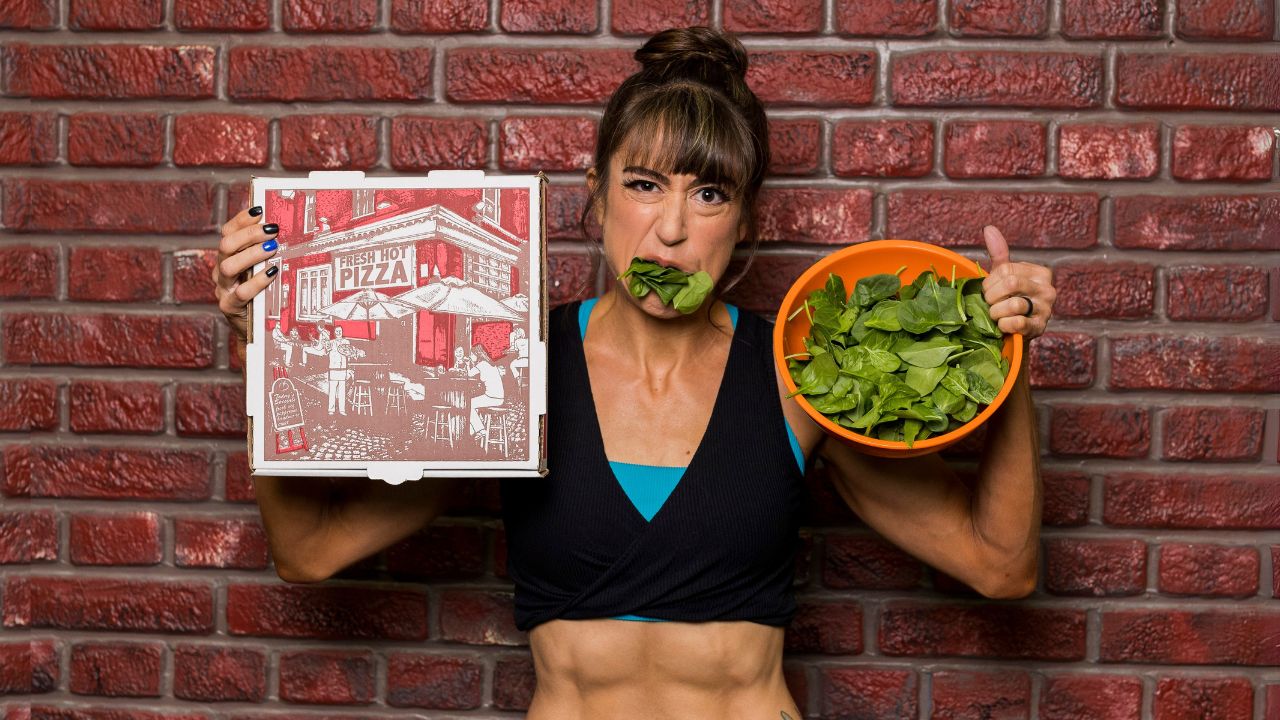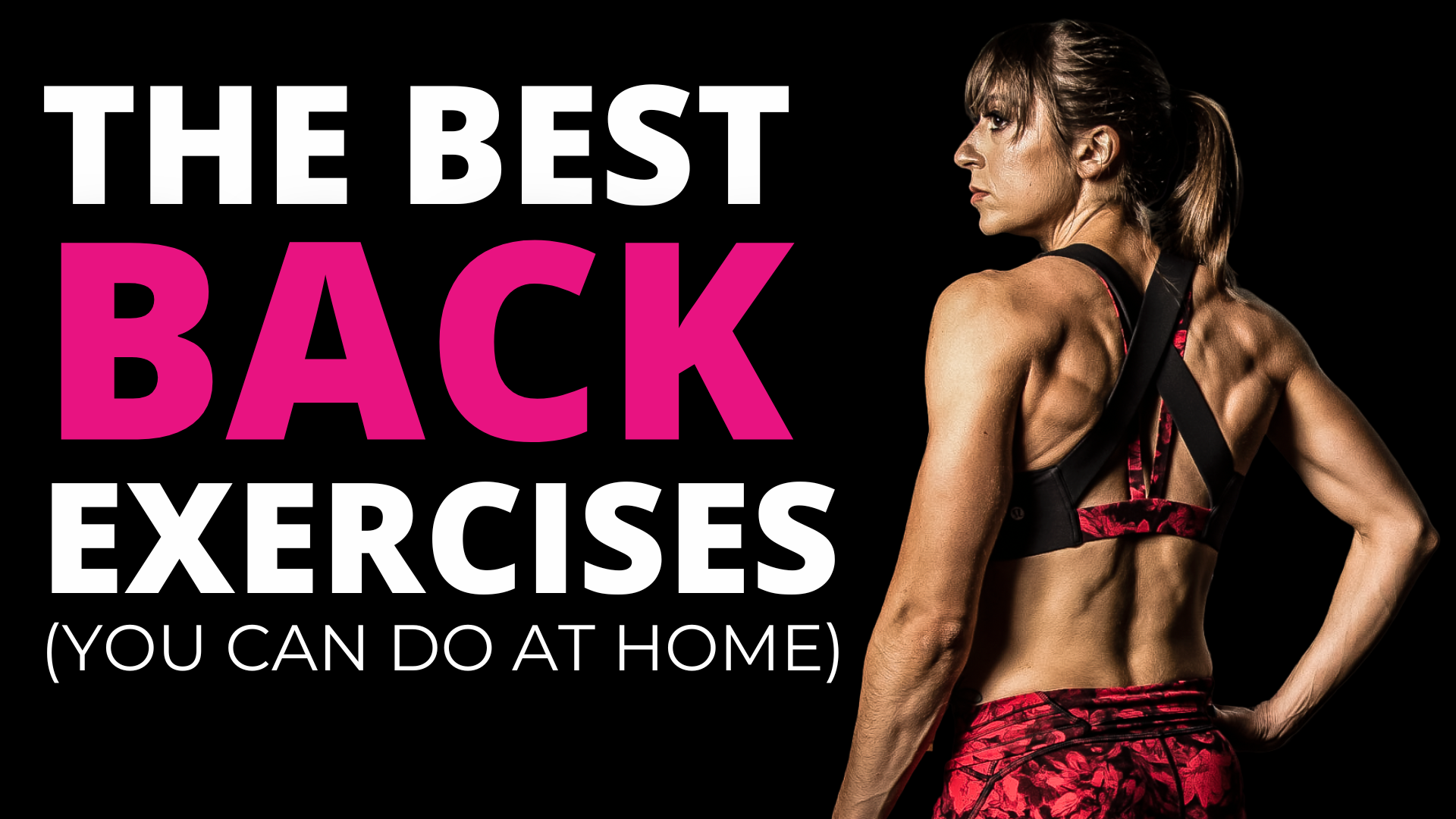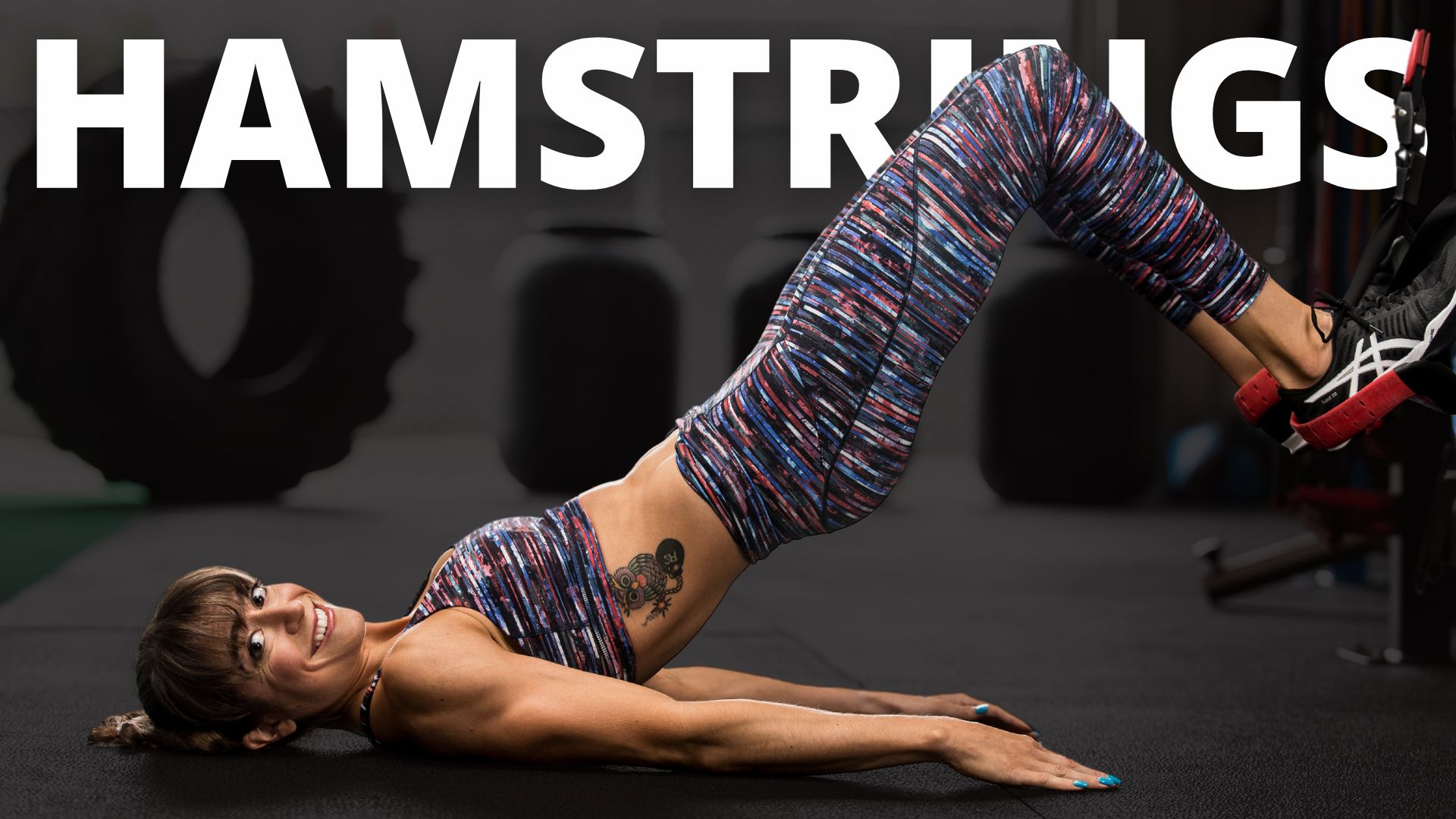
15 Habits To Level Up Your Health & Fitness
We are what we repeatedly do. If we want to reach our goals, we need to implement new habits daily.
But creating new habits isn’t as simple as learning something new.
It’s first becoming CONSCIOUS of daily habits we’re doing that are so comfortable we don’t even realize we are doing them to unlearn AS we also learn the new routines.
This process is hard and it’s why so often we don’t make the changes we need or stick with the new habits for long.
It’s why I want to share 15 habit hacks I wish I’d learned sooner that have helped me now see fabulous and lasting results while continuing to grow and improve!
#1: Follow the one minute rule.

“I’ll just do one minute.”
Any time I don’t want to do something, I set a timer and just say I’ll do one minute.
I almost never stop at one minute.
I do more.
But this small commitment gets me going and it makes the change or habit feel manageable.
If you’re fighting doing something new and not feeling like it, focus on a change that only takes one minute or even set a timer and commit one minute to it.
You’ll be surprised by how much more you do!
#2: Make the habit EXCITING.
Don’t get me wrong, drinking more water isn’t exciting if you’re working on your hydration.
Trying to meal prep or workout at times isn’t always fun.
BUT getting a new and fun water bottle can make you want to use it.
Getting a new protein flavor or fancy lunchbox can make you want to meal prep.
New shoes or cool leggings? You’ll want to wear them to workout.
So find little fun things that can incentivize you to want to do the habits you’re trying to create!
#3: Do it FIRST.
New habits that aren’t comfortable, that aren’t yet a priority in our minds, easily don’t make the cut on a busy day.
“I’ll start tomorrow,” we may even think.
But when we won’t prioritize things when life gets in the way, we need to make sure they are done first.
By doing those habits first in the day before other priorities we know we will do no matter what, we make those new habits important.
And we make sure we make time for them before our energy or motivation slides!
#4: Share the love.
Ever notice you go back to a restaurant or place you thought was the best thing EVER only to realize it wasn’t that good?
When that happens it’s because the EXPERIENCE of that place got tied to other things in that day or event we loved.
We can use this love connection to our advantage and create good feelings surrounding the new habits based on what we connect them with.
Really love a TV show? Walk or do mobility work while watching it.
Love a podcast? Meal prep as you listen.
Connect new habits you aren’t crazy about to good feeling to find yourself mentally embracing them more!
And even recognize if you’re constantly connecting new habits to NEGATIVE emotions to create that push back too!
#5: Embrace the DIScomfortable.
Yes I know the word is uncomfortable but I say discomfortable because A….Discomfort is where growth lives but B. Because it makes you kind of chuckle and also lower that resistance against being uncomfortable.
It’s weird and that takes away some of the negative we often associate with hard new things.
But making yourself uncomfortable with something new every single day for a period of time really helps you create new habits.
Because the goal isn’t just the ultimate fat loss or performance goal you want. It isn’t just a long-term focus.
The goal is actually in the thing you do THAT DAY.
And the more comfortable you become being uncomfortable, the more bigger habit changes along the way don’t feel that bad.
So set a goal to do a new habit to be that beginner or learner and even feel awkward every single day even if the habit isn’t focused on your main goal.
Get discomfortable and see growth happen faster as you see your discipline with new habits improve because you’ve realized you can do hard things!
#6: Do as little as possible.
When we make habit changes, we try to do everything at once.
We want to do more because we want results yesterday. We want to be perfect.
And this is exactly why so many habit changes fail.
Instead we need to think of the overall habit we want and find the easiest, smallest part of it we could do almost immediately.
That guarantees action.
And feeling successful with that often allows us to do more and mentally resist the change less.
It makes it easier to become disciplined with each part as we build because it feels more natural to start!
#7: Think “How can I be lazy with this?”
The more we make things easy on ourselves, the more mentally we will resist the change and quickly embrace doing more.
And the simple fact is, we only have so much time, energy and willpower.
We do have other priorities. And if we don’t own them, they’ll become our excuses.
So any new habit I do, I like to think to myself not only “How can I make this easier?” but also “How can I be lazy with it?”
I buy frozen meal prep. I started with old workout plans I had that didn’t make me write something new.
I plan in meals I’ve already have made and frozen foods.
While sure, I wanted to cook more whole natural foods and create new routines that truly built, using these other things allowed me to be lazier and not have those excuses pop up.
So don’t be afraid to improve but find ways to make things easier on yourself and be a bit lazy.
Use those pre-packaged foods to start if you need.
Get a pre-planned workout routine even if you write your own eventually. But do something so you can move forward!
#8: Make the appointment.
When something is an appointment with a set date and time and even a reminder on it we can see we have to do, we are more likely to do it.
When we give ourselves wiggle room with vague goals of 3 days a week of workouts, it’s easy for us to say “I’ll do it tomorrow” until we run out of days.
So own your schedule, create the appointment and set a time and day with reminders!
#9: Let habits evolve.
Habits we create can and should change over time.
How we dial in our workouts or our diet during January when we’re motivated will be different than the balance we strike during the holidays or a busy time of year for us.
This isn’t a bad thing.
BUT we need to be open to evolution in how we implement things over getting focused on their being one perfect variation.
Always seek to assess where you are RIGHT NOW and let habits shift based on what you need to stay consistent at that time!
Sometimes less is more!
#10: Plan AHEAD.
Yup this hack is unsexy. Most of us know it. Yet few of us do it.
We try to track macros for the first time and don’t plan ahead then get frustrated when we haven’t met our numbers.
But change requires us to make changes and often the only way we can see the changes we need is to PLAN AHEAD.
Don’t let yourself get overwhelmed by not preparing.
Break down new habits and actions into little pieces you can do so you are not only prepared physically but even mentally for the challenges that may be ahead too!
#11: Pause To Reflect.
When something works, we often just keep moving forward.
When something doesn’t work, we either get down about the setback and give up or we try to brush it aside.
We don’t try to learn from both of these experiences.
But we learn more in the reflection than even in the doing.
We see what works. And we see what doesn’t. This is the way we can adjust to keep improving.
So as you create new habits, set end dates at which you’ll reflect and even tweak based on what you’re seeing in your progress!
But don’t get caught up in the doing and never pause to learn from it!
#12: Shut off your brain.
We’ve all been guilty of it…getting caught up in researching and learning only to never actually take action on something.
It’s why we can even sometimes think, “But I know what to do. Why can’t I do it?”
Knowing isn’t doing.
And in trying to learn all the potential outcomes or flaws or find a perfect program…
We can ultimately freeze ourselves with inaction.
Instead sometimes if you want a goal, you just have to choose a habit action and take it.
Then as you go, assess how it is working.
But getting started is often the hardest part. Once you get that out of the way and build that momentum, you can then seek to even learn more and improve.
The more you do, the more you do so do something to get started because thinking about what you COULD do will never move you forward.
#13: Question And Learn More.
Of course, there is a flip side to the “just take action” hack I just shared.
We also can’t think we know everything and are above learning and constantly questioning our own habits and mindsets.
Because it isn’t even that we’re learning these big new “ah-ha” things.
It’s often that we’re learning to be reminded of something in a new way at a time we need to hear it.
We’re learning to get perspective on something we can’t see from that outside vantage point.
So while we need to sometimes just pause our brains and act, we also can’t ever be above wanting to question and learn more!
The more you know, the more you realize that you don’t know. Always more to learn!
#14: Ask WHY?
There are habits we will mentally resist even when we break them down.
And when this happens, we need to ask WHY?
Because so often there is an underlying reason we need to address or NO habit will truly stick and be successful.
Yet too often we just write the habit off as not right for us over trying to truly learn about our needs, mindsets and priorities.
But the more we build that self awareness the more we realize how we can make changes that match what we need.
And part of asking why isn’t just diving into our own mindsets and beliefs…
It’s also about understanding why the change is needed.
The more we see the value and reason for the change, the more we will prioritize making it. The more we will value taking the time and energy to do it.
So use this powerful question to help yourself really understand what you need and the value of the habits to help yourself embrace them!
#15: Love Your Failures.
No matter how much you make small changes…
No matter how much you tweak and adjust…
No matter how much you try to connect habits and set appointments and evolve…
You’re going to make mistakes.
Suffer setbacks.
FAIL at things.
Life will get in the way.
Learn to love these experiences and celebrate them for the learning you get out of them.
Learn to love them because they allow you to show yourself your own strength to overcome.
Success isn’t despite failures…it’s because of them.
So mentally prepare for them and plan to use the experiences to learn!
Which of these 15 hacks did you find most helpful?
Ready to create the habits and lifestyle to build your leanest, strongest body ever and feel your most fabulous?
Check out my 1:1 Online Coaching.
–> Apply Here







